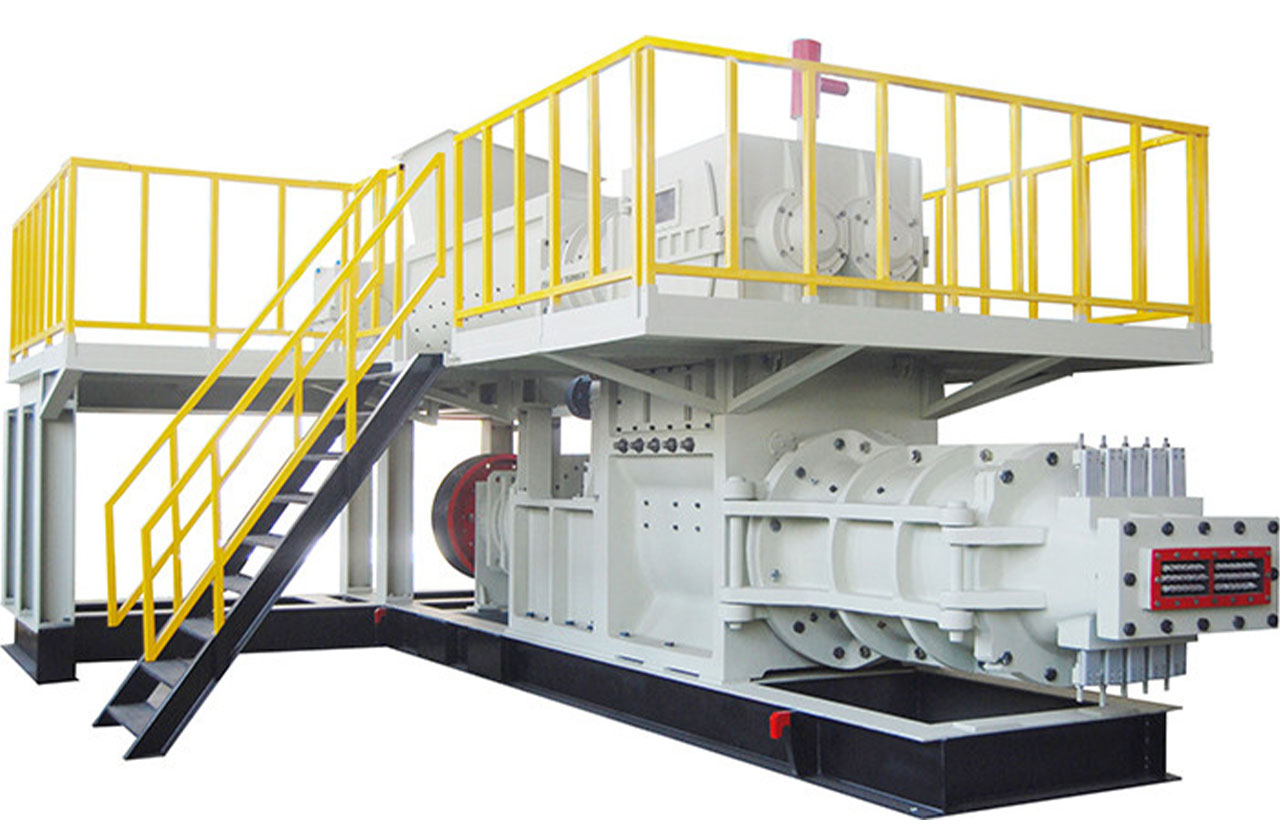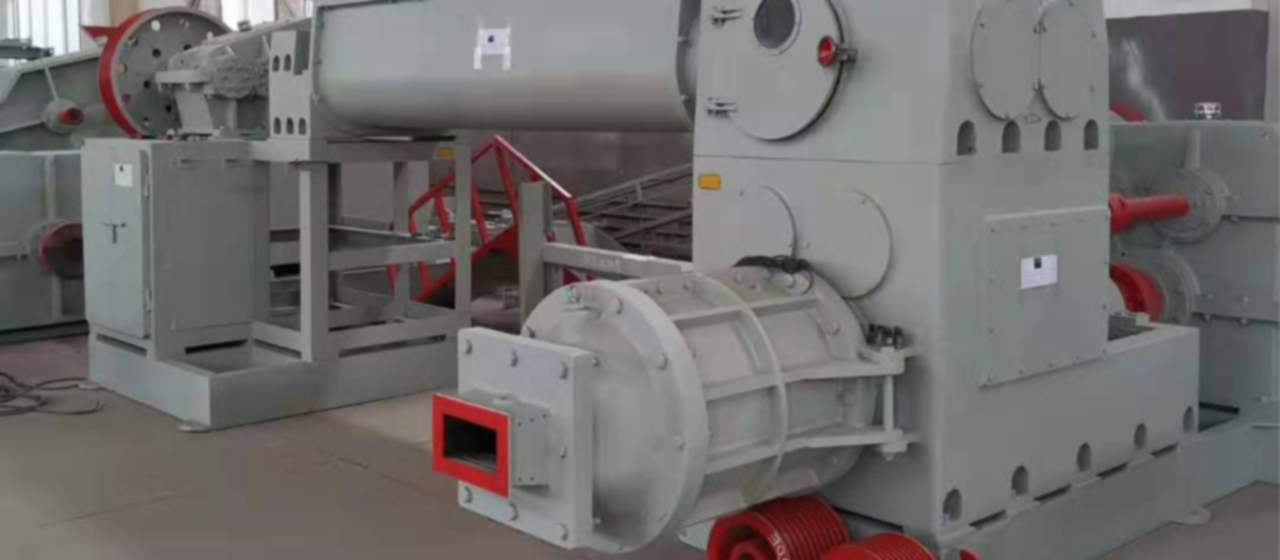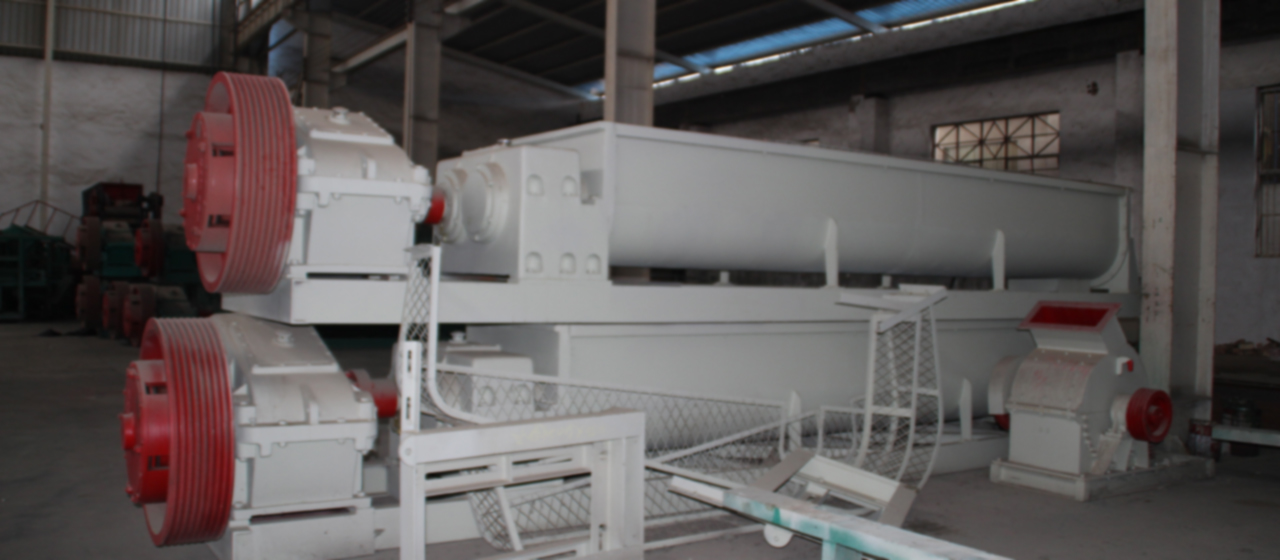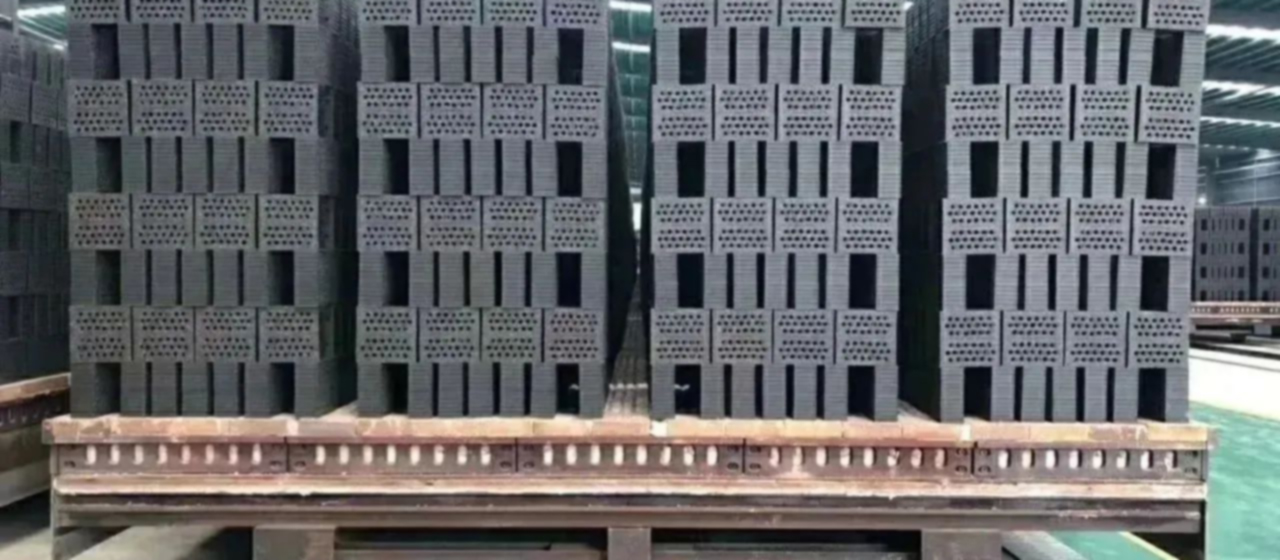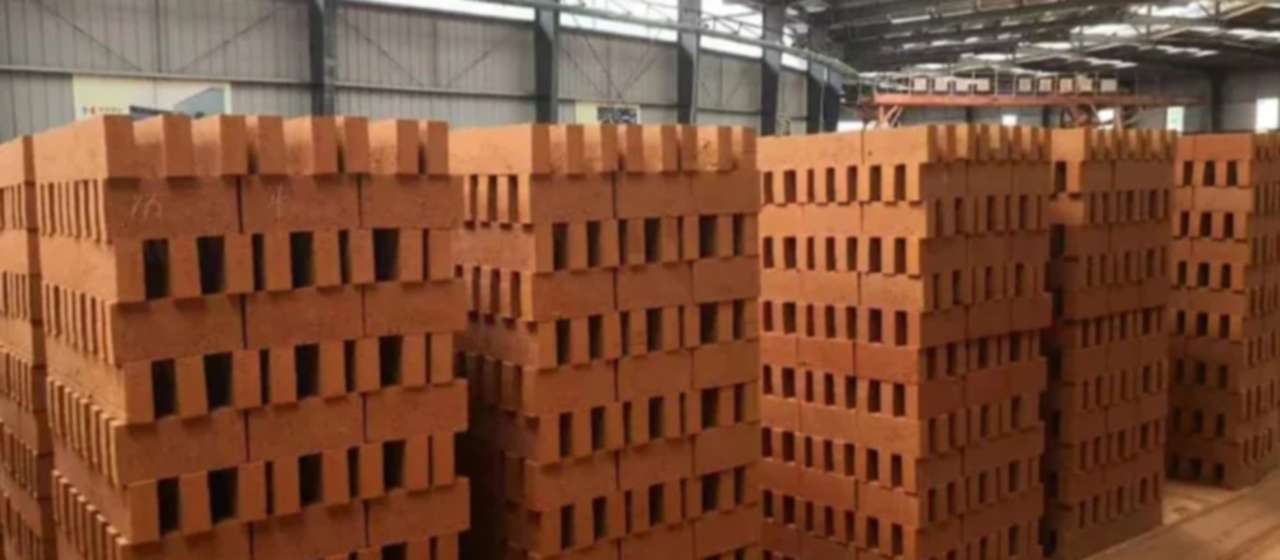brick machinery china
External combustion of sintered brick production line

1. Preface
The fuel used for sintering brick and tile kilns in China is mainly coal or coal gangue, slag, fly ash and other coal based solid fuels (collectively referred to as coal), and most of them use internal combustion roasting technology. Whether using tunnel kilns, circular kilns, rotary kilns, or other kilns, the flue gas generated by calcination using the above fuels contains various pollutants that are very serious, and direct emissions cannot meet the strict emission standards of the environmental protection department. If desulfurization, de sales, dust removal and other treatment measures are taken for the flue gas generated by roasting, not only will the investment and operation management costs be high, but it will also be difficult to meet the requirements of national clean production and green environmental protection. In particular, relevant national departments have proposed the goal of optimizing China’s energy structure, significantly reducing the total coal consumption, and establishing a world-class clean, safe, and efficient energy supply system in the future. Enterprises are facing a series of strict measures such as the government’s environmental protection department’s persistent strategy of improving environmental quality, vigorously promoting ecological civilization construction, and further strict control of air pollutant emissions in industrial production, Brick and tile enterprises must change the current situation, implement clean production, improve design, use clean fuels, adopt advanced process technology, strengthen scientific production management and other measures, and control, reduce or eliminate the generation and emission of various pollutants in the production process from the source. Therefore, replacing coal with gas fuel for firing bricks and tiles is an important optional measure in line with relevant national policies. Gas fuel is a high-quality, efficient, and clean fuel, with no ash content, minimal sulfur content, and no environmental pollution as its biggest highlight. The use of gas fuels can not only reduce air pollution, but also greatly improve the quality and production of products, making it a proactive measure to address both the root cause and the root cause. In areas severely polluted by the regulations of the environmental protection department, such as “prohibiting coal from burning bricks”, “reducing coal consumption”, and “prohibiting coal combustion”, there is no alternative.
The process technology of using gas fuel to calcine bricks and tiles has long been mature and reliable, and has been widely adopted and safely operated on brick and tile production lines in many European and American countries for decades. It is also widely used in ceramic firing kilns in China, which have similar firing processes to brick and tile firing. However, due to various non-technical reasons, brick and tile enterprises in China have fewer production lines that use gas fuel to burn bricks. The vast majority of them use coal or coal containing industrial waste as fuel for internal combustion roasting, and most of them are still one-time firing kilns. Many scholars and experts have published articles discussing and suggesting the transformation of a coal based internal combustion calcination kiln into a gas fuel calcination external combustion calcination (hereinafter referred to as “coal to gas”), explaining and solving some important issues. Based on the author’s practical experience and operation, provide a brief description of some related technical, equipment, process, and management issues:
2. The basic principles of coal to gas conversion
2.1 Adhere to the performance and combustion characteristics of gas fuels
There are many types of gas fuels, and commonly used ones include natural gas (including pipeline natural gas, compressed natural gas, liquefied natural gas), liquefied petroleum gas, gas, biogas, gas (including coke oven gas, blast furnace gas, producer gas, etc.). Gas fuels and solid fuels such as coal have different shapes and physical properties, especially with completely different combustion characteristics; The performance and characteristics of various gas fuels vary. The kiln, thermal principle, process system, operation method, and corresponding supporting equipment and facilities that use gas fuel are very different from those that use solid fuel. It is necessary to transform the corresponding production line, roasting kiln, and thermal system according to the characteristics and requirements of the selected gas fuel combustion.
2.2 Follow the technical characteristics of the external combustion and roasting process in the kiln
Gas fuel cannot be mixed into the raw materials for brick making, and of course, internal combustion roasting is not possible. Using gas fuel as the fuel for kiln roasting is inevitably an external combustion roasting process. Therefore, any process technology, thermal system, tooling equipment, etc. that are not suitable for the external combustion roasting process requirements should be abandoned or modified to meet the requirements of external combustion roasting in principle.
3. Specific issues of coal to gas conversion
3.1 Dismantling equipment for crushing, screening, blending, and mixing of solid fuels
The internal combustion roasting tunnel kiln production line, which uses coal and heat as fuel, has switched to using gas fuel for external combustion roasting. The original solid fuel crushing and screening equipment, metering and blending system, and mixing and stirring equipment on the production line can be removed and not used, and related material conveyors, dust collectors, and other auxiliary equipment can also be removed or used for other purposes. Only the crushing, metering and blending equipment for other raw materials can be retained.
3.2 Impact on raw material ratio, billet forming, and wet billet drying
After no solid fuel is added to the raw materials, the original mixing ratio of various raw materials also needs to be changed, and the mixing ratio of other various raw materials should be readjusted according to the process requirements. Because most solid fuels are infertile materials (except for those containing montmorillonite), the mixture no longer mixed with these solid fuels may have higher plasticity index values and increased drying sensitivity coefficient values than before. The larger the proportion of solid fuel blending, the greater the change. If the plasticity and drying sensitivity of the raw materials increase significantly, it is necessary to consider adding an appropriate amount of other suitable infertile materials.
If the plasticity index is increased due to the absence of solid fuel in the raw materials, it is beneficial for the formation of the billet, reducing forming defects and improving the appearance quality of the billet. But the optimal molding moisture of this raw material often increases, so it may also be necessary to adjust the molding moisture of the billet appropriately. If the molding moisture increases, the wet strength of the billet will decrease. To prevent fracturing or even collapse of the wet billet stacking, it is necessary to determine the reduction of the number of high layers of the billet stacking according to the specific situation.
When the plasticity index and drying sensitivity coefficient increase significantly due to no longer blending barren solid fuels in the raw materials, it will be unfavorable for the drying of the wet body, and the body is prone to dry cracks; The increase in molding moisture will also prolong the drying time. The larger the proportion of barren solid fuel that was originally blended, the more obvious this situation becomes. In this regard, measures such as mixing other infertile materials, increasing the static stop time of wet billets, adjusting the drying process system (appropriately extending the drying time, increasing the temperature of the drying medium, and increasing the wind speed and air volume of the drying medium) can be considered.
3.3 Types of Gas Fuel
There are many types of gas fuels that can be used for brick and tile kiln roasting, and each enterprise should choose them reasonably according to their own conditions.
3.3.1 Natural gas
Natural gas is a commonly used gas fuel. The main component of natural gas is saturated hydrocarbons, with methane as the main component (over 90% methane). Ethane, propane, butane, and pentane are not abundant, and there are also small amounts of non hydrocarbon gases, such as carbon monoxide, carbon dioxide, nitrogen, hydrogen, hydrogen sulfide, water vapor, and trace amounts of inert gases such as helium and argon.
There are three types of commonly used commercial natural gas in industry, namely pipeline natural gas, compressed natural gas, and liquefied natural gas. Pipeline transportation of natural gas is relatively the most economical and convenient, and enterprises with conditions should choose pipeline natural gas as their first choice. However, most of our brick and tile enterprises are built in remote areas far from cities, and natural gas pipelines may not be widely laid near factories. If natural gas pipelines cannot be used, compressed natural gas can be considered. Compressed natural gas is a gas fuel that is purified and compressed to 20MPa~25MPa. The production process, technology, and equipment of compressed natural gas are relatively simple, convenient for transportation and loading and unloading, and its application technology is also relatively mature. It has the characteristics of low cost, high efficiency, low pollution, and relatively safe and convenient use. As an alternative gas fuel, it is particularly significant in areas without pipeline gas fuel. However, the use of compressed natural gas requires the provision of two or more compressed natural gas transport tank trucks or containerized tanks for backup and rotating use.
Liquefied natural gas is a liquid gas fuel produced by cooling gaseous natural gas under high pressure and low temperature conditions at -162 ℃. Natural gas is further purified during the liquefaction process, with higher methane purity, almost free of carbon dioxide and sulfides, and colorless, odorless, and non-toxic. However, liquefied natural gas must be stored in insulated and low-temperature storage tanks, and storage, transportation, and use must all be carried out under atmospheric pressure and low temperature conditions. The characteristics of low temperature require that the materials of equipment and pipelines in the system should prevent brittle fracture and cold shrinkage under low temperature conditions, which can cause harm to equipment and pipelines. It is also necessary to solve problems such as system safety, cold insulation, evaporative gas treatment, leakage diffusion, explosion prevention, and low-temperature burns. So the investment and cost of using liquefied natural gas are relatively high, and safety requirements and hazard prevention are strict. Only brick and tile enterprises with the conditions can use it.
3.3.2 Liquefied petroleum gas
It is relatively convenient to use liquefied petroleum gas for kiln roasting. Liquefied petroleum gas is a high-pressure liquefied petroleum gas, mainly composed of a mixture of propane, butane, hydrogen, and other gases. It has the advantages of relatively low pollution, high heat generation, easy transportation, stable pressure, simple storage, flexible supply, convenient use, and easy acquisition, and is widely used in industry. At present, many industrial kilns and heating furnaces in various industries have switched to using liquefied petroleum gas as fuel, and many ceramic factories are using tunnel kilns that burn liquefied petroleum gas to burn porcelain and tiles. The tunnel kiln production line of a factory in Tianjin used liquefied petroleum gas transported by tank trucks as fuel to roast high-end decorative bricks, which was very successful.
3.3.3 Gas
There are many types of gas, commonly used include coke oven gas, blast furnace gas, generator gas, etc. The main components are a mixture of hydrogen gas and carbon monoxide. The composition and calorific value of various types of gas vary greatly due to their sources and production methods. Among them, coke oven gas and blast furnace gas are purified and contain less harmful components such as sulfur dioxide, making them convenient for downstream users to use directly. This type of gas is produced by gas source equipment and supplied to households or the catering industry through small gas tanks. Urban gas and industrial gas with high consumption are generally transported to the usage site through pressure pipelines, which can be used in brick and tile factories with convenient conditions. However, it is unlikely that brick and tile factories will have their kilns built right next to coke ovens or blast furnaces, or near gas pipelines. If the distance is too far and new pipelines are added for transportation, there may be more problems, and even it is not feasible. So, if a brick and tile factory must use a gas roasting kiln, it is necessary to build a gas generator in the factory area and transport the gas from the generator to the kiln through pipelines for use. There are at least three major problems with using a gas generator: firstly, the fuel used in the gas generator is coal, which often falls short of the “coal related” red line of the environmental protection department and is restricted in use. Before renovation, it is necessary to communicate and consult with relevant local departments, and proceed only after obtaining approval; Secondly, it is necessary to carry out desulfurization, dust removal and purification treatment on the gas generated by the gas generator, or to carry out desulfurization and dust removal treatment on the flue gas after combustion in the kiln; The third is that the phenol water produced by the gas producer needs to be treated reasonably and effectively to avoid secondary pollution.

